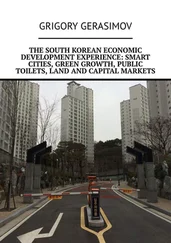Saving of the required quality of a service limits increasing in the quantity of subjects simultaneously consuming it. That is why it is quite reasonable, for example, to use norms of the ratio between the number of teachers and students, between the quantity of coaches and sportsmen, restrictions of the quantity of passengers in a bus and the like. In such conditions an increase, in the social scale, in time of consumption of a service supposes an increase in total time of rendering the service what is connected to an increase in employment of a respective kind.
Growth of total volumes of consumption time of any service beyond certain limits can prevent from human development and that is why it ceases to be the measure of progress. For example, an increase in time of standing in queues in shops because of deficits does not characterize progress of the sphere of trade. An increase in time spent in transport because of congestion, a long distance between a place of work and a place of living also does not prove development of transportation services. But such hypertrophied growth in certain sectors of the services sphere does not change the volume of free time of the society, it leads only to redistribution of this time in favor of such spheres to the detriment of ensuring other essential conditions for human development.
There is a right conclusion that the general volume of free time of the society shows in itself possibilities of development of members of the society, thanks to rendering services too, but it does not show the way these possibilities are realized. The degree of their realization is determined by the ratio between components of free time of the society: this ration must correspond to the criterion of free development of all members of the society. In practice it more or less deviates from the necessary correspondence.
Of course, there cannot be a full coincidence of the dynamics of time of providing, on one hand, and consumption, on the other hand, of services in the social scale. For example, utilization of information technologies is able to widen audience of training courses sharply. At the same time, there is remaining a need for decreasing in kindergarten teachers’ exertion to improve conditions in which children stay at pre-school institutions. Development of the public health system leads to decreasing in time of patients’ staying at hospitals but it is connected to increasing in time for preventive examinations. By and large, ensuring favorable conditions for development of all members of the society supposes a direct dependence between total time of rendering services and time of their consumption.
Consumption of services can be realized as within socially regulated activities, for example, studying at schools or institutes of higher education, so beyond them. Time connected to going to work and returning from it, shopping, etc., is not related to working or studying time but it is not usually included in leisure, though without being regulated, it bears similarities to it.
In the leisure sphere people can utilize services of organizations (stadiums, museums, and the like) by means of visiting them or staying home, as it happens when watching television broadcasts and surfing the Internet. Consumption of services of some kind takes the main part of a modern human’s leisure (of course, this conclusion is made on the well-grounder prerequisite that domestic labour is not an element of leisure).
It follows that the quantity of free time of the society, summarizing time of labour in the nonproduction sphere, time of socially regulated consumption of services, and time of leisure, gives a quite strict quantitative characteristic of time scales for free development of members of the society.
At the same time, the volume in itself of free time of the society does not allow to judge the level of social welfare. For example, two countries may have equal magnitudes of free time but different volumes of total time of production labour. Then free time per capita will be different in these countries. That is why for the adequate assessment of social welfare of the services sphere it is necessary to take into account the ratio of free time of the society to its total working time – the rate of free time of the society.
V.Y. Yelmeev advanced the idea to use this index [13].
The rate of free time of the society is determined as follows [14].

where N is the rate of free time during a period; Tw1 is total working time in public production during a period (hours); Tw2 is total working time in housekeeping during a period (hours); Tf1 is total time of free activities directed immediately towards satisfaction of social needs, during a period (hours); Tf2 is total time of free activities directed towards satisfaction of personal (family) needs, during a period (hours).
It is essential that this index takes into account working time in housekeeping fulfilled by women mostly. It allows to assess volumes of working activities in the social scale adequately, while since the 19 thcentury “male government officials made the decision to reclassify housewifery from a legitimate occupation into a general state of idleness; with the removal of a checkbox on a census form, the work of millions of women was “disappeared”” [15].
Utilization of hours as a measurement unit allows to give the most accurate assessment to the duration of different kinds of social activities. It is reasonable to determine the meaning of this index, as applied to a year period (though other variants are not excluded). The formula does not take into account time being spent on satisfaction of physiological needs because this time is not related to social activities, by its essence.
The higher the rate of free time of the society is the higher the level of social welfare is, at equal other conditions. Indeed, a higher level of this rate means that if the society satisfies its needs for consumer goods and means of production, it has more significant opportunities for activities immediately connected to development of its members. This conclusion is true as for comparing different countries so for researching economic development of a particular country.
The dynamics of this rate is accordingly a key index of changing in social welfare.
The level of social labour productivity increases logically. With growth of labour effectiveness per a unit of time less working time is needed to satisfy a fixed social need, saving of labour takes place.
Saving of working time of the society can be divided into relative and absolute. The relative one means reduction of working time for production of a certain volume of output while general expenditures of production labour do not decrease. The result of such saving is either growth of output in the sphere where labour productivity has increased or redistribution of labour in the social working time fund. The absolute saving supposes such reduction of working time that is transformed into growing of free time of the society.
Saving of production labour, based on development of production forces, enlarges the sphere of nonproduction social activities what corresponds to progress of the society. That is why saving of working time appears to be the law of social production development.
A correspondence between expenditures of specific kinds of nonproduction labour and the quantity of needs satisfied by them is also necessary in the nonproduction sphere. A redundancy of specific kinds of nonproduction labour is possible, for example, in case of weathering away of some needs, improvement in the material and technical basis of rendering services, etc. Then reduction of volumes of the activities noted before is needed what, by analogy with processes in the production sphere, can be called relative saving.
Читать дальше













